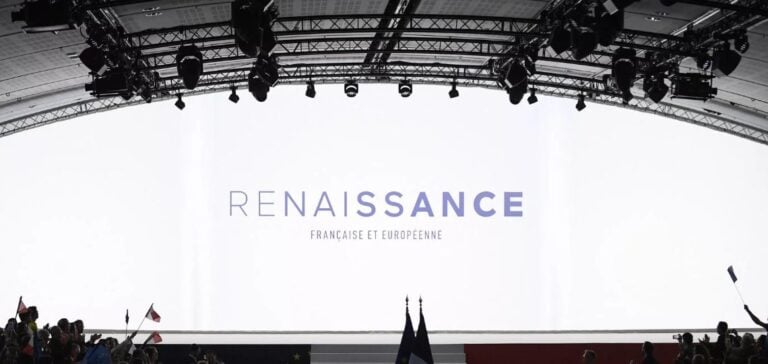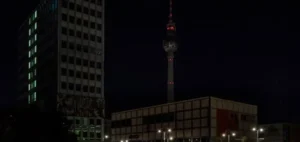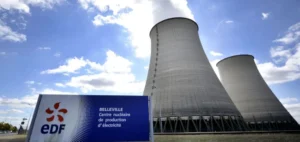In what promises to be a historic political turning point for France, the Renaissance party has unveiled its energy program. In line with the energy policy pursued by President Emmanuel Macron, the presidential party is trying to convince voters with a program in favor of French nuclear power and renewable energies.
An ambitious nuclear program
The Renaissance party, in line with President Macron’s energy policy, unveils an energy plan that places nuclear power at the center of France’s decarbonization strategy. This program includes the creation of 14 new nuclear reactors, divided into two phases. The first calls for the construction of six EPR2 reactors, while the second adds eight more. This initiative aims to guarantee stable, low-carbon energy production.
The party also proposes to extend the life of existing nuclear reactors as long as they meet safety standards. This will ensure that all current reactors continue to operate reliably. The development of SMRs is also planned to offer greater flexibility and lower deployment costs.
Innovation is a central pillar of this program, with significant investment in the research and development of new nuclear technologies, including fuel recycling and radioactive waste management.
Nuclear power is an essential element in reducing dependence on fossil fuels and guaranteeing low-carbon energy production. A vision unquestionably advocated by Renaissance. The President’s visit to the Flamanville EPR last May was a crucial step in France’s energy transition.
“Atomic Europe”: a vision for the future
During his speech at the Sorbonne in April, Macron also called for the construction of a “Europe of the atom”. However, this vision comes up against divisions within the EU itself, between pro-nuclear states such as France and so-called anti-nuclear states such as Germany. For the Head of State, the most important thing is to produce decarbonized electricity, whether nuclear or renewable. He also stressed the importance of electricity interconnections in Europe, aimed at creating an integrated and resilient decarbonized electricity market.
Focus on Renewable Energies
Renaissance doesn’t just promote nuclear power. The party also places a strong emphasis on renewable energies. It proposes to make environmentally-friendly vehicles more accessible, with the introduction of 100,000 electric vehicles for hire at 100 euros a month each year. This measure has been in place since January 1, 2024, and will be extended to 2025. In addition, a fund dedicated to the energy renovation of buildings has been set up to renovate 300,000 homes by 2027, primarily targeting those presented as “heatwasters”.
The program also includes a significant expansion of offshore wind power through tenders, equity investments or the EIB (European Investment Bank), aiming to reach 18 GW of capacity by 2035, as well as doubling the rate of deployment of photovoltaic solar power to 75 GW. The Saint-Nazaire wind farm in the Loire-Atlantique region is due to open in 2022.
Despite initial reluctance, Renaissance plans to maintain and double onshore wind power capacity to 40 GW by 2035, including efforts to replace older wind turbines with more efficient models. The ambition to increase biogas production fivefold by 2030 to 50 TWh is also highlighted, positioning biogas as a key component of the energy mix.
Despite the reopening of the coal-fired power plant in Saint-Avold, Moselle, the party is firmly committed to reducing greenhouse gas emissions by 55% compared to 1990 and by 20% by 2027, also taking into account the targets set by the Paris Agreements.
Hydrogen and Hydroelectricity
The Renaissance hydrogen program aims to invest in green hydrogen production, with a target of 6.5 GW of electrolysis capacity by 2030. This project is part of the France 2030 plan to position France as a world leader in hydrogen. Against this backdrop, France has set up a strategy for low-carbon hydrogen with funding of 7 billion euros, to which will be added almost 2 billion euros through the France 2030 initiative to accelerate its implementation. The development of hydrogen-powered vehicles, including cars, trucks and trains, is also planned.
In terms of hydropower, the party plans to modernize and increase the capacity of existing infrastructures. Dam renovation and extension projects are planned to improve efficiency and energy production.
Social and economic implications
On the social front, Renaissance proposes to help companies invest in green technologies and adopt more sustainable practices. This measure includes subsidies for renewable energy and low-carbon hydrogen projects. The party is also proposing to simplify administrative procedures for SMEs, encouraging innovation and initiative, and to reduce employers’ contributions for salaries above the minimum wage, in order to encourage wage increases without increasing costs for companies.
The presidential party also plans to reduce electricity bills by 10% to 15% from February 2025, in response to the rise in energy prices caused by the War in Ukraine. A flagship measure promised by the French Minister of the Economy, Finance and Industry, Bruno Le Maire, and the Prime Minister, Gabriel Attal.
“200 euros less […] thanks to the reform of the European electricity market that we have obtained.”
Added to this is the Prime Minister’s announcement of a €40 billion budget for ecological planning by 2024. This funding is aimed at supporting various initiatives, such as simplifying the DPE (energy performance diagnosis) and access to MaPrimeRénov’ aid, launched in January 2020, to encourage thermal renovation of buildings. These measures, which are part of a broader program, aim to advance the country’s ecological transition while stimulating economic growth and employment in green sectors.
Contradictions and challenges
Despite an ambitious energy program, Renaissance faces many contradictions and challenges. The reactivation of the Saint-Avold coal-fired power plant to meet France’s energy needs calls into question the party’s commitment to abandoning fossil fuels once and for all. In addition, the rapid development of renewable energies, while encouraging, could encounter regulatory obstacles and local resistance, particularly for onshore and offshore wind power. The massive investments needed for the energy transition could put a strain on public finances and require strong private partnerships.
Moreover, achieving these targets will depend largely on technological progress and innovation, which may not keep pace with expectations. Modernizing and adapting existing infrastructures to integrate new energy sources also poses a considerable technical and logistical challenge. On the other hand, the construction of new nuclear reactors, although planned, is based on a technology that is costly in the long term, with risks associated with nuclear waste and safety. A measure that could also accentuate France’s energy dependence on nuclear power, threatened by the increase in fusion projects.
The Renaissance energy program proposes an ambitious vision for France’s energy future. By focusing on nuclear power and renewable energies, the presidential party intends to meet growing energy needs while drastically reducing CO2 emissions. By investing in innovation and infrastructure, Renaissance aims to position France as a world leader in the energy transition. This plan promises significant economic and social benefits, while ensuring sustainable and sovereign energy for future generations, although the presence of significant challenges and contradictions is notable. Despite this, Renaissance’s energy ambitions remain largely shared by the center-right Horizon party, formed by former Prime Minister and current Mayor of Le Havre, Édouard Philippe.






















